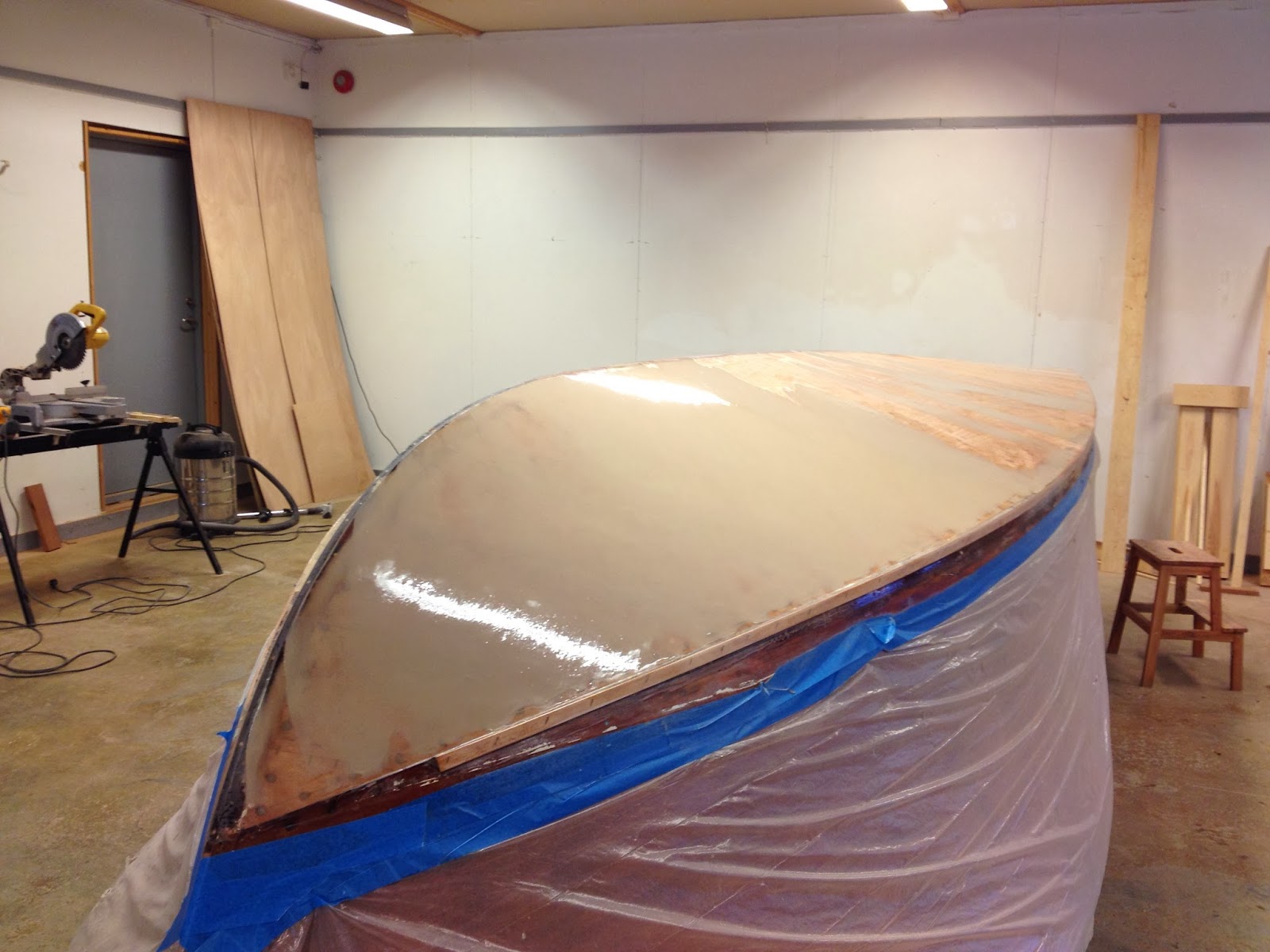After letting the epoxy cure for 4-5 days, it was time fort primer and bottom color. I used a 2 component epoxy primer and a 2 component polyurethane bottom paint.
A dark green is the correct bottom color for the 1958 Florida. However, finding the right shade of green was not easy. The Riva green is a rather dark green, and non of the standard colors seemed right. I ended up making a custom mix of two standard Epifanes paints to find the right shade of green.
The prop struts and the rudder bushing is permanently installed with Sikaflex before flipping the boat over.
The boat back on even keel, getting ready for a complete strip-down of the old finish. Some repairs to the deck and side wood needs to be addressed. And the wood needs to be bleached to try to get the water stains out.















